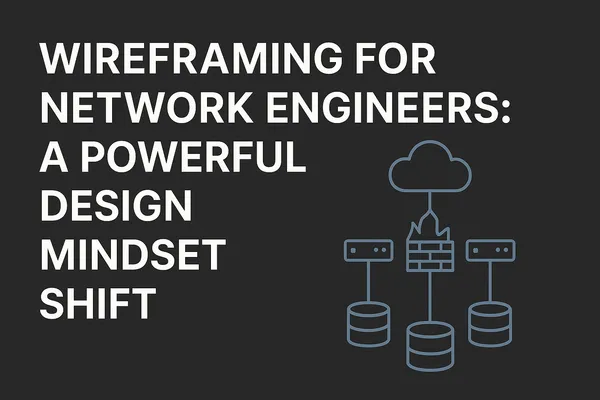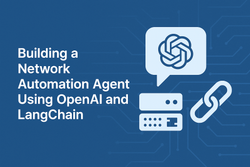On this page
As a network engineer or architect, you're used to thinking in terms of packets, ports, topologies, and protocols. Your world is often defined by the intricate dance of data, the robust architecture of hardware, and the precise syntax of configurations. But what if a key to elevating your design approach came from an entirely different domain — UX design?
In our previous post, "Leveling Up Network Engineering: Why We Need to Think Like Product Teams", we argued that it's time for network professionals to adopt a product-centric mindset. This means focusing on stakeholder needs, defining a clear vision, using engineering-grade metrics, and embracing iteration. Now, let's dive into a concrete practice that perfectly embodies this product approach: wireframing.
Yes, wireframing, a core practice in web and application development, offers a surprisingly relevant and valuable lens for planning network architectures. It might sound unconventional, but hear us out. In this post, we’ll explore how the concept of wireframing can be applied to network engineering, enabling better collaboration, clearer documentation, and ultimately, more agile and resilient network design.
What is Wireframing (Traditionally)?
To truly grasp its power for network design, let's first clarify what wireframing means in its traditional context. In software design, a wireframe is a low-fidelity visual representation of a user interface. Think of it as a skeletal layout that defines structure and flow without getting bogged down in visual styling or detailed behavior. It's used early in the design process to:
- Communicate structure and hierarchy: It answers questions like "What goes where?" and "How is information organized?"
- Align stakeholders on vision: It provides a common visual language for designers, developers, product managers, and even clients to discuss the core functionality and layout.
- Rapidly test different ideas: Because they're quick to create and modify, wireframes allow for fast iteration and experimentation with various layouts and user flows.
- Reduce rework before development starts: By identifying potential issues or misunderstandings early, wireframing saves significant time and resources down the line, preventing costly changes once actual coding begins.
Think of it as the “blueprint” of an app, much like an architect’s plan for a building before any bricks are laid, or a sculptor's initial armature before adding clay. It defines the foundational elements.
The Network Engineering Parallel
Here's where it gets interesting. In network engineering, we inherently do something remarkably similar — but we often don’t call it "wireframing." Instead, we create:
- High-level topology diagrams: These are our initial sketches of how major network segments interconnect.
- Logical architecture overviews: We define the functional layers and relationships within the network.
- VLAN and IP address schemas: We map out our addressing strategy and segmentation, laying the groundwork for how devices will communicate.
- Device role definitions: We assign specific functions to network devices (e.g., core router, access switch, firewall).
- Traffic flow diagrams: We visualize how data will traverse the network, from user to application to database, identifying critical paths.
These early-stage designs are functionally identical to wireframes: they are abstract, simplified representations meant to define intent, structure, and interaction — before implementation begins. They focus on the "what" and "how" at a conceptual level, rather than the "config this command."









